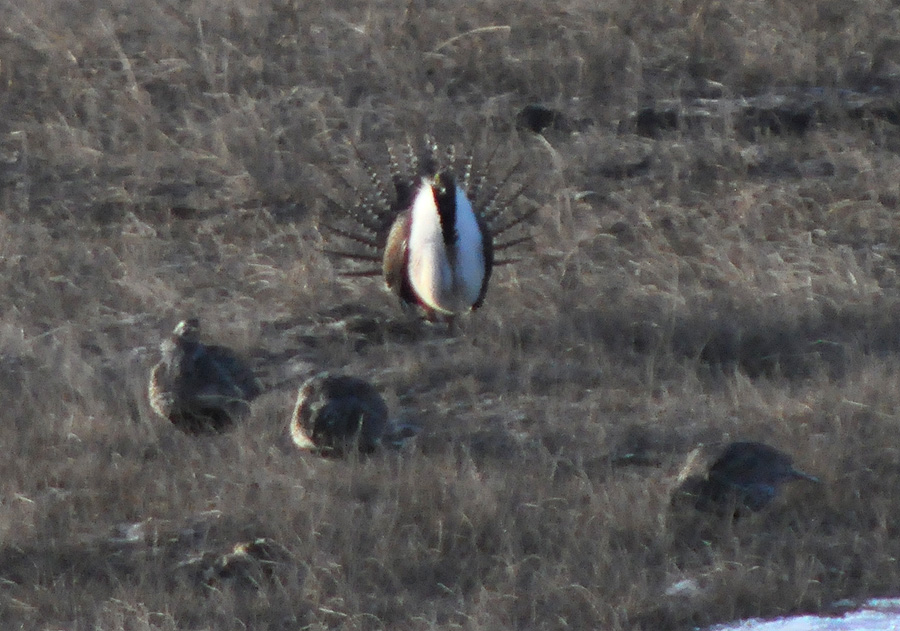
Sage Grouse
The Centrocercus urophasianus, or Greater Sage Grouse, is the largest grouse in Utah. With about 15,000 breeding pairs in about 26 counties in the state, it is more numerous than its smaller cousin, the Gunnison Sage Grouse, which is found primarily in San Juan County alone. The bird is gray-brown with a dark belly and long, pointed tail feathers. The male has a black throat in front, with white behind, and large white air sacs on each side of the lower neck. Weighing about 7 pounds, they average 25 to 30 inches in length. Females are smaller, being about 20 inches in length, weighing only about 4 pounds, and lack the air sacs. The Sage Grouse inhabit sagebrush plains, foothills, and mountain valleys where the sagebrush vegitation is plentiful, but rarely below 4,000 feet. Although during warm weather they will eat the leaves and flower heads of clover, dandelions, grasses and other plants, during the winter their diet is almost exclusively the leaves of sagebrush.
During March and April, males perform spectacular courtship performances, strutting with tails errect and air sacs inflated. Breeding is followed by nesting in shallow depressions lined with grass or twigs, often under sagebrush. The hen lays 6 to 10 eggs which hatch about 25 days later. Although still hunted in some areas, the population of these birds is a miniscule portion of the numbers originally existing in the state and it continues to decline in most counties.
 |
| Taken early morning of April 15, 2011, in Northwestern Carbon County. Nikon D-90 with 300mm Nikkor lens and 3X converter. ISO set at 2000 and the result was cropped. Be sure to view the video clips. |